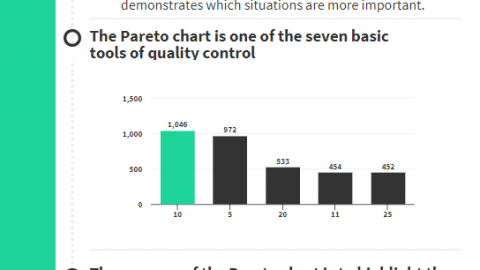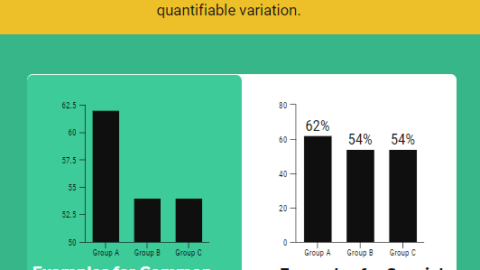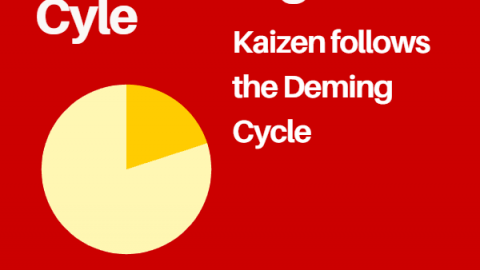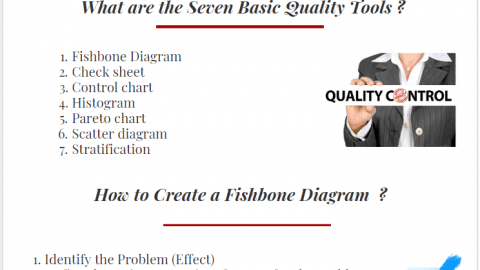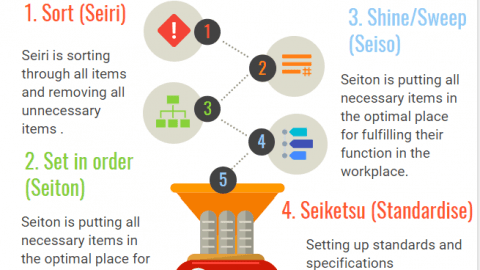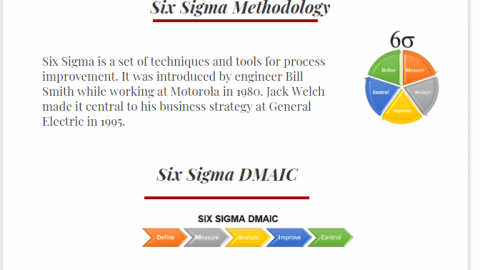What is Total Quality Management?
Today, companies use quality, price, and speed elements to increase their profitability and gain customer satisfaction. Companies that manage these elements well survive. Yet, others do not get the result they want. The total quality management that emerged in Japan in the 1950s covers these elements. We’re all customers and we have very different requests. We want better service, better quality products and more. So what does the quality we often use in everyday life mean?
Table of Contents
Quality Concept
The concept of quality means that customer expectations are fully met within total quality management. Quality and customer concepts are intertwined. Many departments make up a company such as finance, accounting, quality, production. These departments have to do their job properly. The aim is to improve quality and ensure customer satisfaction. To meet customer requests in an institution or enterprise, all production activities must be within a system.
In summary, together with the participation of employees at all levels, the common goal is to develop the business together to create a quality job without errors.
According to the total quality management system, quality should be a lifestyle and a way of thinking. The integration of man with his mindset, his work, his business, and life, in a nutshell, is quality.
The basis of total quality management is the principle of “making no mistakes” instead of the principle of “debugging.”
To sum up, total quality management involves employees continuously improving their ability. The purpose is to deliver the products and services that customers demand. The process of detecting, reducing, or eliminating errors during manufacturing, facilitating supply chain management, and improving customer experience are key elements of total quality management.
What is the Purpose of Total Quality Management ?
Total quality management aims to meet the customer’s needs and expectations. The aim is also to be in the goal of continuous improvement to ensure satisfaction. Achieving a forward-looking performance in all processes with the participation of all employees is the way to achieve this goal.
Key Elements of Total Quality Management
There are eight elements of total quality management understanding. Design of products and services, process design, procurement and purchasing, benchmarking, decision-making tools, employee participation in decision making, continuous improvement, and customer satisfaction are at the center of all this.
Design of Products and Services
The steps required for a quality service design are as follows:
Identify possible customer potential for products or services during the design process,
Reviewing customers’ expectations,
Contact customers again when the design begins to take shape and test how much of the customer’s expectations are met during the design phase.
It is important to maintain feedback about the design after-sales within the scope of total quality management!
Process Design
We can explain this concept in the form of production processes. Of course, experts must plan these processes well. Design errors can cause unnecessary process steps to disrupt the plan. Process steps can become more efficient when employees participate in production and decision-making processes.
Procurement and Procurement
Companies may have to purchase parts that are needed through other companies in the process from design to the end of production. To prevent supplier errors and maintain a sense of quality, suppliers must also be involved in the process. Public or private sector organizations can negotiate with food companies to meet the food needs of their employees.
Benchmarking
Knowledge, creativity, focus are the principles of comparison. Also, it is possible to access quality applications outside the country. It has an important place in total quality management for enterprises to compare with better enterprises in terms of quality, customer satisfaction, and competitiveness. Thanks to the comparison, it is possible to find issues that are open to improvement, reduce product costs and increase market share.
Decision Making Tools
Total quality management benefits many companies by having practical recommendations and practices. Total quality is a management approach that allows employees to participate in the decision. To participate in the decision, employees need to learn methods such as quality diagrams and fishbones and know how to use statistical tools to measure the impact of their work.
Participation of Employees in the Decision
There is a human factor on which the total understanding of quality management is based. Applications such as training employees, caring about teamwork, and owning the work of employees happen in environments where employees express their opinions freely.
Continuous improvement
An innovative and creative approach embraces the idea of continuous improvement. The goal here is not to reach a standard, but to continuously improve. Small improvements and improvements lead to positive results in the product or service. In this process, everyone should discuss every situation as a thought and behavior and look for ways to improve it.
Clearly, the concept of total quality management becomes the center of attention in terms of the benefits it can bring even in companies that do not implement it. Having team spirit in terms of total quality contributes to the establishment of quality awareness. In the total quality management culture, everyone from security guards to managers is both a customer and a supplier to each other. Each department is responsible for quality. Everyone should do their part in customer satisfaction.
Where Did Total Quality Management Come From?
During the Second World War, there were decreases in quality while increasing production with the increase in demand. These quality decreases have been both in the product and in the service pillar.
Due to the surplus demand after the Second World War, the quality pressure of the consumer, and the competitive conditions, the necessity to follow a new path in quality control applications has arisen.
As a result, the concept of “Total Quality Control” has started to come to life. At this stage, “Total Quality Management”, which is the 21st-century quality concept, has become widespread.
On top of this, it has become mandatory to use several different methods and tools. We can give examples such as statistical methods to solve quality problems. The concept of quality has started to shift from finished product inspection to reporting quality control results.
In fact, Total Quality Management started to gain attention all over the world in the early 1990s. This kind of management was first implemented in the industrial sector. It has spread to other sectors in a short time with the ability to improve the quality of the produced goods and thus reduce errors and costs.
Today, total quality management courses are the recommendations of most companies to solve the quality problems that exist both in the enterprises producing goods and services and in various areas of public administration.
For further reading, you can visit the website of The American Society for Quality Source and access detailed information.

I have a degree in chemical and bioprocess engineering and am now a project manager at Hera Healthcare, and I also have a clothing brand that I co-founded and I am an amateur artist. I have a huge obsession with art history (especially renaissance, baroque and rococo) and I think life imitates art!



